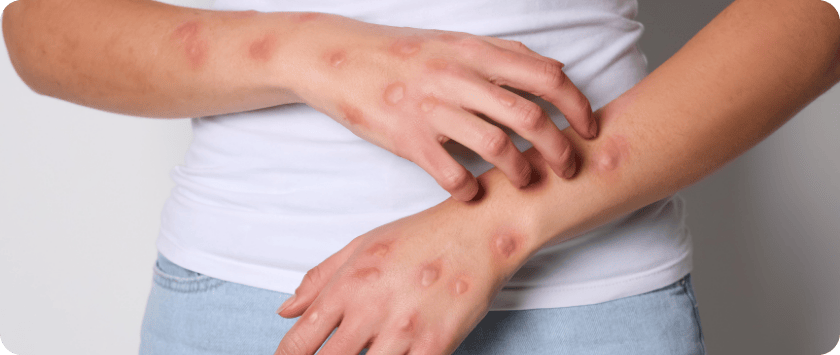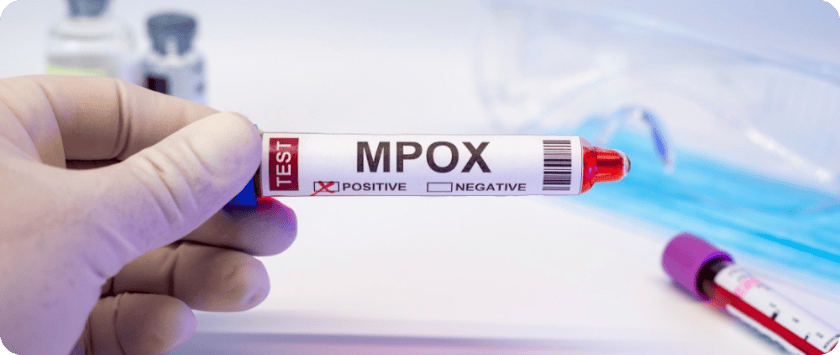Preventing Monkeypox (Mpox)

What is Monkeypox (Mpox)?
Mpox (formerly known as monkeypox) is a viral infection caused by a virus from the same family as smallpox (Orthopoxvirus). It can be transmitted from animals to humans or from person to person through close physical contact. In recent years, outbreaks have been reported in several countries outside of Africa, where the disease was previously more common.
Infected individuals typically experience flu-like symptoms accompanied by a rash, which may appear on the face, hands, feet, or genitals. Most cases are mild and resolve on their own within 2–4 weeks, but serious complications can occur, particularly in individuals with weakened immune systems.
Mpox is not a new disease, but it has gained renewed attention due to recent outbreaks, especially among individuals who engage in close-contact sexual activity, including men who have sex with men (MSM). This has highlighted the need for vigilant monitoring, accurate diagnosis, and public education to prevent further spread.
If you suspect you may have been exposed to the virus or are showing symptoms, it is important to seek medical attention immediately and avoid close contact with others until a proper diagnosis is confirmed.
Mpox Variants (Clades)
There are two main variants (or clades) of the monkeypox virus: Clade I and Clade II. Both clades can spread through similar modes of transmission, primarily including:
- Close physical contact with an infected person, such as during sexual activity or direct skin-to-skin contact
- Contact with contaminated objects or materials, such as clothing, bedding, or personal items used by an infected individual
- Exposure to infected wild animals, particularly in regions of West and Central Africa, through handling or consumption of live or dead animals
Both Clade I and Clade II can cause symptoms of Mpox. Therefore, vigilance and risk reduction are essential, especially in outbreak areas or among high-risk groups.
How Mpox Spreads
Mpox is transmitted through close or intimate contact with an infected person, regardless of the viral clade. Situations that may lead to transmission include:
- Direct contact with skin lesions, rashes, or scabs of an infected individual
- Exposure to bodily fluids, such as saliva, mucus, or fluids from sores—particularly around the anus, vagina, or genitals
- Vertical transmission from a pregnant person to their fetus during pregnancy, delivery, or after birth
Transmission through close contact can occur during activities such as:
- Oral, anal, or vaginal sex
- Touching the genitals, including the penis, testicles, labia, vagina, or anus
- Hugging, massaging, or kissing
Because Mpox can spread through any intimate physical interaction, even without penetration, awareness and preventive measures are critical to reducing your risk of infection.
Symptoms of Mpox
Individuals infected with Mpox typically develop a rash, which may appear on the hands, feet, chest, face, mouth, or near the genital and anal areas, such as the penis, testicles, labia, vagina, or around the anus.
The incubation period ranges from 3 to 17 days, during which the person may feel completely normal with no visible symptoms. The rash itself progresses through several stages:
- It may start out resembling pimples or blisters, and can be painful or itchy
- The rash evolves, forms scabs, and usually resolves on its own
Other possible symptoms include:
- Fever
- Chills
- Swollen lymph nodes
- Fatigue or exhaustion
- Muscle aches or back pain
- Headache
- Respiratory symptoms such as sore throat, nasal congestion, or cough
You may experience all, some, or even just one or two of these symptoms. Symptom severity varies from person to person, depending on immune status and the extent of infection.

When to See a Doctor
You should seek medical attention immediately if you:
- Notice a new or unexplained rash, especially in the genital or anal area
- Experience flu-like symptoms after close contact with someone who may have Mpox
- Have had close physical or sexual contact with someone suspected or confirmed to be infected
What to Do:
- Consult a healthcare provider: A doctor or nurse can assess your risk and determine whether testing is needed. If you don’t have a regular doctor or insurance, visit your nearest public health clinic.
- Get tested if recommended: If testing is needed, a sample will be collected from your rash or affected area and sent to a laboratory.
- Avoid close contact with others: Until you've been seen by a medical professional, refrain from sex, kissing, hugging, or skin-to-skin contact to prevent the possible spread of infection.
Mpox Vaccination
Vaccination is an important tool in helping prevent the spread of Mpox. If you meet certain risk criteria, you may be eligible to receive the Mpox vaccine and protect yourself from infection. Contact your local healthcare provider, pharmacy, or public health office to inquire about vaccine availability and nearby vaccination sites.
Key Facts About the Mpox Vaccine
- Even if vaccinated, you should still avoid direct skin-to-skin contact with individuals infected with Mpox to ensure maximum protection.
- Currently, it is not recommended to receive more than two doses of the Mpox vaccine. If you’ve already completed the two-dose series, no additional booster is needed—even if you have been exposed again.
- If you have previously had Mpox, the CDC does not recommend getting the JYNNEOS vaccine at this time. While reinfection is possible, it is extremely rare (less than 0.001%), and symptoms are typically milder than during the initial infection.
